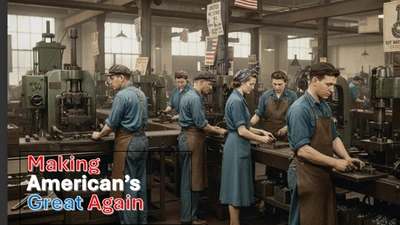Before diving into what to do, it’s worth understanding the risks and tailwinds you’re up against. Some relevant dynamics:
- Tariffs and trade conflict tend to introduce uncertainty, which markets hate. That can raise volatility, increase risk premia, and pressure sectors tied to trade, global supply chains, and materials.
- On the flip side, some sectors may benefit (or be less harmed) — e.g. domestic manufacturing, defense, substitutes for Chinese inputs (rare earths, semiconductors, alternative supply chains).
- Over time, markets often price in a “peace premium” — if there is a deal or de-escalation, equities can rally. Some observers believe such tariffs are temporary shocks. Business Insider
- Additional risks: inflation (tariffs are like taxes on imports), higher input costs for firms relying on Chinese parts, retaliation, spillovers to global growth.
Given all that, a pragmatic approach is to hedge the downside while still participating in upside.
What a prudent investor might do
Here are several strategic approaches (not all mutually exclusive). You can mix and match.
Strategy | Rationale | Possible Actions |
Diversification & hedging | Reduce exposure to worst-case scenarios | - Keep a portion in “defensive” or non-correlated assets (TIPS, high-quality bonds, gold, cash). |
Overweight U.S.-focused, import-light sectors | These are less sensitive to China-trade shocks | Sectors like domestic infrastructure, utilities, defense, some consumer staples, domestic energy, certain tech firms with less China exposure. |
Bet on reshoring / supply chain reconfiguration plays | Tariff pressure gives impetus to companies relocating supply chains away from China (“China+1”) | Invest in firms that produce alternatives, in countries gaining production (e.g. Vietnam, Mexico, ASEAN). Also, in U.S. companies that build or enable supply chain infrastructure. |
Commodity / materials plays (with caution) | Some raw materials/rare-earths or metals may benefit from supply tightness | But beware speculation and policy risk. |
Barbell strategy | Combine safe and aggressive bets | Allocate a portion to stable, low-volatility assets and a portion to higher-risk, high-upside plays. |
Stay liquid and nimble | You want flexibility to adjust | Don’t get overly locked into positions that are hard to unwind when the policy shifts. |
Watch policy signals carefully | Tariff and trade policy is largely discretionary | Be alert to major announcements, summit outcomes, or regulatory changes that could shift the landscape rapidly. |
A sample tilt or allocation thought (very rough)
Suppose you have a moderately aggressive equity portfolio. You might consider:
- 10–20 % in hedges or low-volatility / “safe” assets (bonds, TIPS, cash, gold).
- 50–70 % in equity exposure, but skewed toward domestic plays, resilient sectors, high-quality names.
- 10–20 % in opportunistic or asymmetric-risk plays (e.g. speculative materials, supply-chain enablers, alternative production regions).
Again — these percentages are just illustrative; your actual allocation should reflect your goals and risk tolerance.
What not to do (or to be wary of)
- Don’t over-leverage or take huge bets based purely on tariff speculation — policy can reverse quickly.
- Avoid overly concentrated exposure to Chinese-dependent supply chains unless you have a strong hedge.
- Don’t neglect the macro risks: inflation, interest rates, global growth slowdown.
- Be careful with small-cap firms that may be more fragile to shocks.










